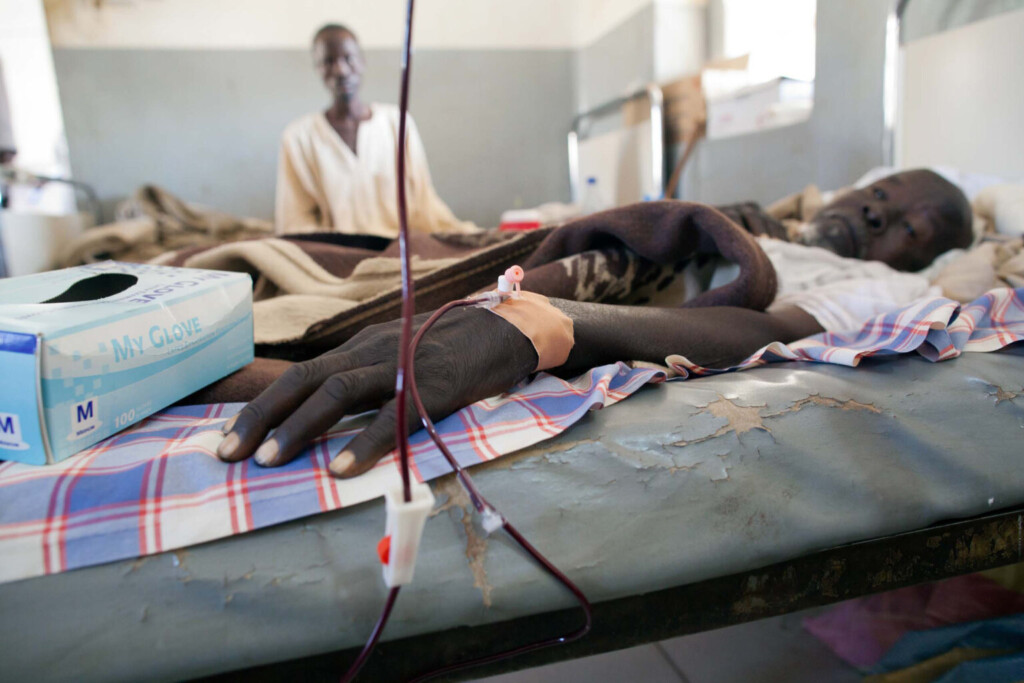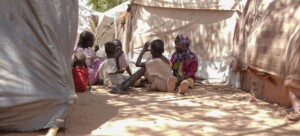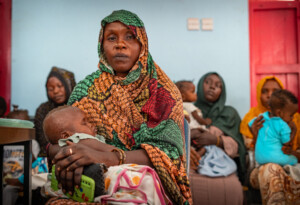Sudan doctors alarmed at ‘mysterious’ eye disease outbreak

A patient is receiving a blood transfusion at the intensive-care area of the El Fasher Hospital, North Darfur, 2012. (File photo by Albert González Farran, UNAMID)
Ophthalmologists have raised their concerns over a perplexing eye disease spreading rapidly across Darfur over the past two weeks, including Nyala in South Darfur and Ed Daein in East Darfur, affecting hundreds of people. The illness, which emerged two weeks ago, causes severe redness, swelling, intense pain, and sensitivity to light, with many patients experiencing lingering vision problems.
Local health workers, overwhelmed by the growing number of cases, lack the resources and tools needed to diagnose and treat the disease. Docctor Idris Jalab of the Buram Teaching Hospital, close to the South Darfur capital of Nyala, reported daily cases but noted uncertainty about the disease’s cause.
Last week, Mahmoud Mustafa, a resident of Nyala whose wife and children were infected, told Radio Dabanga that the disease appeared within the past two weeks. He added, “The disease lasts for about three to four days in some patients. Even after recovery, individuals often experience lingering vision problems and difficulty with light sensitivity.” He speculated that the disease might be linked to environmental damage from aerial bombardments or remnants of heavy weaponry used during the conflict in Darfur.
Consultant ophthalmologist Abdelwahab El Sisi also suggests that the outbreak might be linked to environmental damage from the ongoing conflict in the region, possibly involving toxic remnants of war. He urged residents to take preventive measures and called for international health organisations to investigate and provide support.
According to El Sisi, who has performed over 300 eye surgeries in Darfur’s treatment camps, these conditions are categorised into two types. The first is related to chronic allergies, causing itching and redness, which could be genetic or linked to the region’s climate and is not infectious. The second type, purulent ophthalmology, is caused by bacteria.
He told Radio Dabanga that the prevalent eye issues in Darfur are non-infectious sensitivities exacerbated by war remnants, stating that it is most likely “polluted air inhaled through the nose” which is directly affecting the eyes, and leading to redness and other symptoms.
The doctor added that these polluted war remnants can also impact other parts of the body, including the chest and lungs, causing issues such as airway congestion from inhaling air.
Health authorities in Darfur are grappling with the outbreak amidst a backdrop of deteriorating public health infrastructure. The South Darfur Minister of Health, El Hadi Abdelraheem, acknowledged the reports but requested more time for investigation before making an official statement.
The outbreak comes as Sudan faces additional health challenges, including a surge in acute watery diarrhoea cases, particularly in the state of Kassala. Federal state officials reported 192 cases and 12 deaths, urging transparency and international assistance to combat the escalating health crises in the region.











 and then
and then